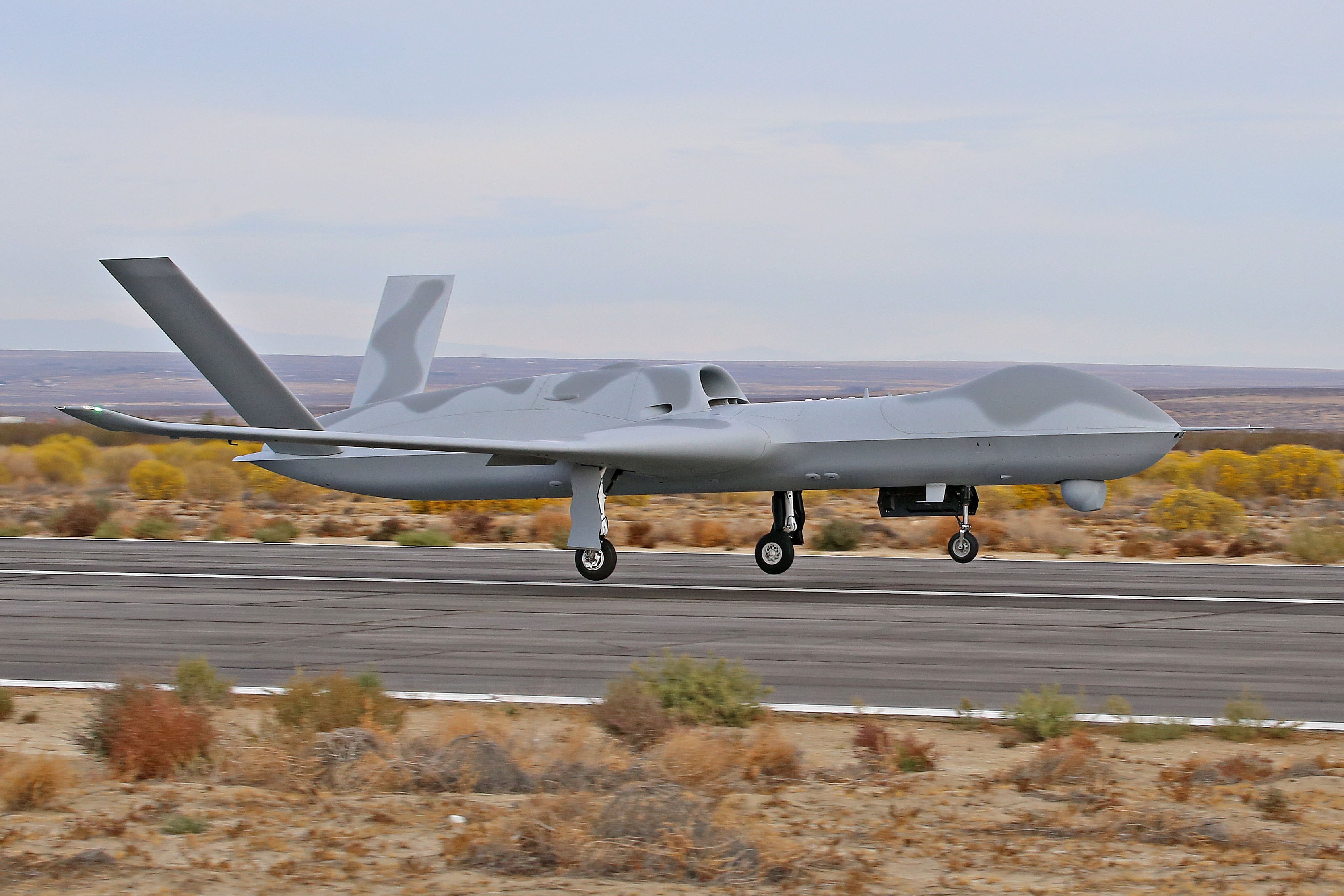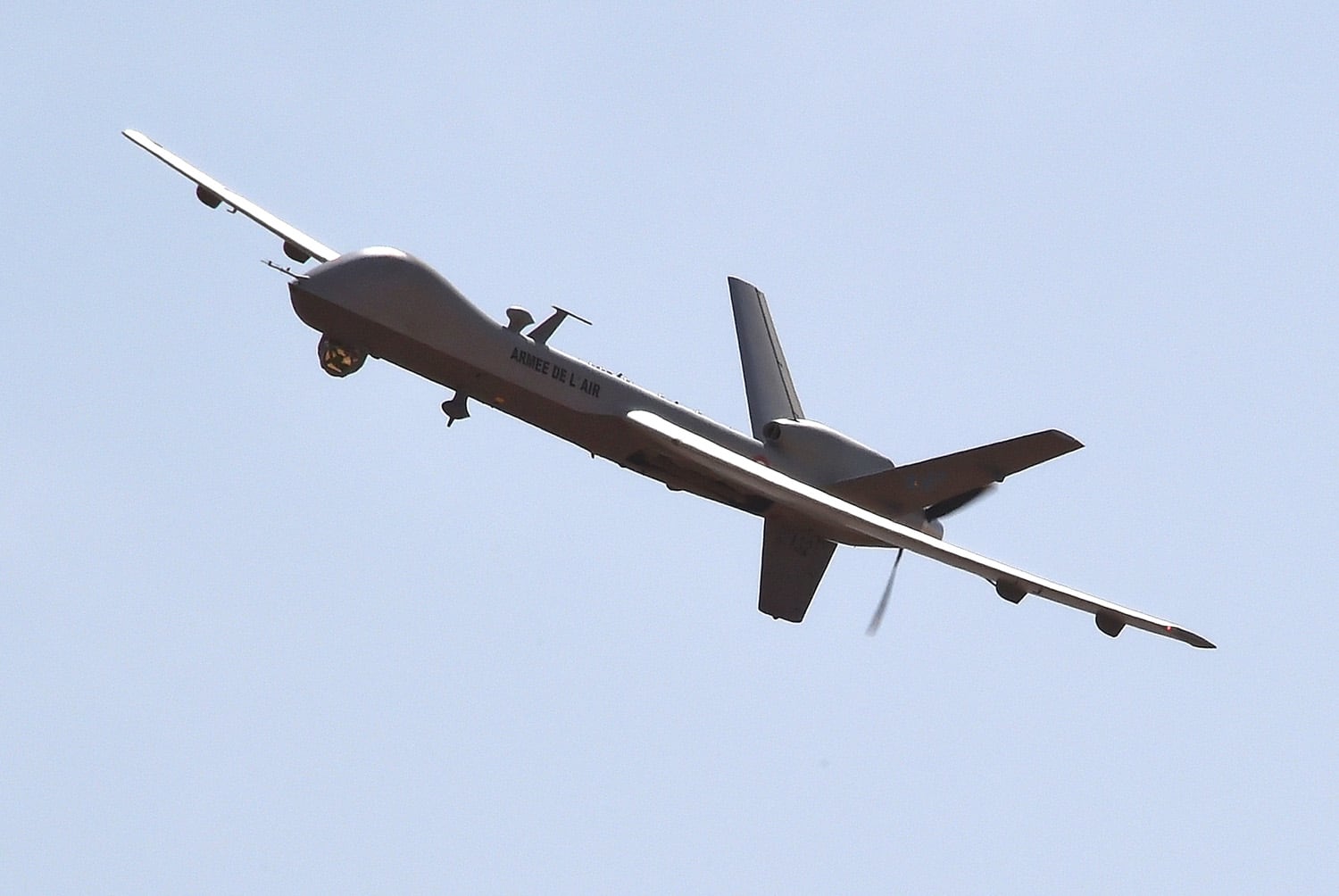POWAY, Calif. — At the beginning of the century, U.S. drone makers were king, but export restrictions on UAVs have allowed China to begin closing the technology gap, the president and CEO of General Atomics said Wednesday.
Many government entities don’t understand that when the United States denies UAV manufacturers the ability to sell drones to allies and partner nations, those companies also lose the chance to provide logistics and sustainment services that bring even more business over the life cycle of the product, said Linden Blue, the company’s chief executive.
“What you are enabling the competition to do is not just to sell some hardware,” he told reporters during an Aug. 16 roundtable at the company’s headquarters in Poway, California. “You’re enabling it to build a customer base for at least 20 years, I would say. You’re enabling them to build a logistics system. It will take them many years to get to where we are right now, but you’re helping them start out. They should be very thankful.”
There is a technical and political component to this as well, Blue said. By relinquishing UAV sales to U.S. competitors like China, the U.S. government allows those countries to learn more about how to effectively use and sustain unmanned aircraft. Perhaps even more importantly, that sale paves the way for a deeper partnership between U.S. adversaries and other nations.
“They are going to learn how to provision spare parts, they are going to learn what kind of maintenance is really necessary, they’re going to learn how to integrate the UAVs into those local militaries’ other assets and after a few years they will become an inextricable part of those countries’ militaries,” he said.
RELATED

Interest in General Atomics’ MQ-1 Predator exploded at the turn of the century as the wars in Iraq and Afghanistan began, and defense companies from around the world raced to develop their own version of the Predator. But the days when the Predator was the only medium-altitude, long-endurance, or MALE, UAV around are long gone.
At the Paris Air Show this year, Chinese defense firm Chengdu Aircraft Industry Group exhibited a static display of the Wing Loong, a MALE drone that bears a strong resemblance to the Predator and its larger counterpart, the MQ-9 Reaper.
David Alexander, GA’s president, acknowledged that China had already breeched the technology gap, at least on the low-end side of the market.
“They’re here,” he said.
In recent years, General Atomics has been active in trying to educate Congress and the White House about UAV export controls and the effects, both to GA’s business and on a wider level, Blue said.
RELATED

An administration official told Defense News earlier this month that the Trump administration has launched a review of drone restrictions, meaning relief could be coming soon.
The most damaging restriction is the Missile Technology Control Regime, an informal, multinational agreement meant to help check the spread of nuclear weapons. The MTCR labels any UAV that has a range of more than 300 kilometers and a payload of more than 500 kilograms as a Category I system on par with ballistic missile and space launch vehicles.
Changing the MTCR is likely a long-term endeavor that will require the participation of many countries, but in the short term, the United States could change its own drone export policies — which in effect have made it difficult to export UAVs outside NATO countries and treaty allies.
“MTCR does allow some level of judgement by the participating country. It’s not a black or white decision every time,” Blue said. “So if you can address the current U.S. UAV export policy, that would be a quicker thing that could bring results.”
Valerie Insinna is Defense News' air warfare reporter. She previously worked the Navy/congressional beats for Defense Daily, which followed almost three years as a staff writer for National Defense Magazine. Prior to that, she worked as an editorial assistant for the Tokyo Shimbun’s Washington bureau.








